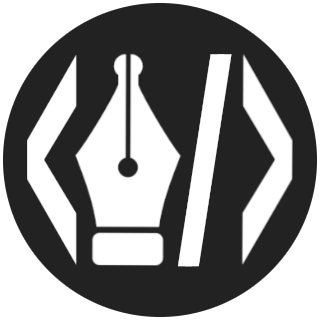Solving Data Science 100 Knocks with Pandas, Polars, and SQL (#1-#10)

Table of Contents
We solve Data Science 100 Knocks using Python (Pandas/Polars) and SQL.
Data Science 100 Knocks
This material is published by the Data Science Association on GitHub. It allows learning of statistical methods using programming languages and machine learning techniques with Sklearn, while processing fictional data for data science.
Why Solve It
This is a personal motivation, so feel free to skip it. However, if you’re unclear about how to utilize it or why to solve it, you may find this helpful as a reference.
In mid-November 2024, I had no involvement with data science at all and wasn’t particularly interested in learning it. However, I decided to proceed for two reasons. First, I gained some free time. I was updating the site and freely programming without focusing on web apps. As a result, I had an overflow of things I wanted to do and needed to do, so I prioritized and organized them, securing time for site updates and learning data science. But this reason alone felt weak, so here’s the second one. While managing and improving tasks through programming at work, I was evaluated for skills in solving problems using tech, as well as adjustment and management abilities, leading me to end up in a PM-related role. As a PM, I must create roadmaps, make plans to move things forward, communicate directions, motivate toward goals, and systematically achieve targets while producing outputs and outcomes. In this process, to get stakeholders involved, evaluate results, and conduct improvements, quantification is extremely important. Numbers with context create stories, enable persuasion, and allow explaining impacts or improvement status using numerical trends. While programming can collect or create numbers, to understand and explain them with higher resolution, data science techniques for data processing and aggregation are essential. I believe I should learn data science as a means to explain business situations specifically and effectively using numbers, which is why I decided to solve these problems.
Environment Setup
Docker installation is required, but you can challenge Data Science 100 Knocks on any OS, including Windows, Mac, or Linux. After installing and logging into Docker, execute the following commands.
git clone https://github.com/The-Japan-DataScientist-Society/100knocks-preprocess
cd 100knocks-preprocess
docker-compose up -d --buildOnce the command execution is complete and the setup is finished, access the following URL to display Jupyter Notebook, from which you can tackle the problems in the internal notebooks.
http://localhost:8888Polars Compatibility
The Python notebooks are included in the environment, but they are set up for Pandas only by default. Copy and paste the Python notebook, then modify the copy as follows.
import os
!pip install polars
import polars as pl
import numpy as np
from dateutil.relativedelta import relativedelta
import math
from sqlalchemy import create_engine
from sklearn import preprocessing
from sklearn.impute import SimpleImputer
from sklearn.model_selection import train_test_split
from sklearn.model_selection import TimeSeriesSplit
from imblearn.under_sampling import RandomUnderSampler
if 'PG_PORT' in os.environ:
host = 'db'
port = os.environ['PG_PORT']
database = os.environ['PG_DATABASE']
user = os.environ['PG_USER']
password = os.environ['PG_PASSWORD']
conn = create_engine(f"postgresql://{user}:{password}@{host}:{port}/{database}")
df_customer = pl.read_database(query='select * from customer', connection=conn)
df_category = pl.read_database(query='select * from category', connection=conn)
df_product = pl.read_database(query='select * from product', connection=conn)
df_receipt = pl.read_database(query='select * from receipt', connection=conn)
df_store = pl.read_database(query='select * from store', connection=conn)
# Increase infer_schema_length to improve type inference accuracy
df_geocode = pl.read_database(query='select * from geocode', connection=conn, infer_schema_length=100_000)
else:
if not os.path.exists('../data/'):
!git clone https://github.com/The-Japan-DataScientist-Society/100knocks-preprocess
os.chdir('100knocks-preprocess/docker/work/answer')
dtype = {
'customer_id': pl.Utf8,
'gender_cd': pl.Utf8,
'postal_cd': pl.Utf8,
'application_store_cd': pl.Utf8,
'status_cd': pl.Utf8,
'category_major_cd': pl.Utf8,
'category_medium_cd': pl.Utf8,
'category_small_cd': pl.Utf8,
'product_cd': pl.Utf8,
'store_cd': pl.Utf8,
'prefecture_cd': pl.Utf8,
'tel_no': pl.Utf8,
'postal_cd': pl.Utf8,
'street': pl.Utf8
}
df_customer = pl.read_csv("../data/customer.csv", dtypes=dtype)
df_category = pl.read_csv("../data/category.csv", dtypes=dtype)
df_product = pl.read_csv("../data/product.csv", dtypes=dtype)
df_receipt = pl.read_csv("../data/receipt.csv", dtypes=dtype)
df_store = pl.read_csv("../data/store.csv", dtypes=dtype)
df_geocode = pl.read_csv("../data/geocode.csv", dtypes=dtype)This code installs Polars additionally, switches from Pandas DataFrame to Polars, and handles Polars type inference. By using this code, you can solve problems with Polars in addition to Python’s Pandas.
Notes
We will solve Data Science 100 Knocks in sets of 10 questions each using Pandas, Polars, and SQL. However, SQL cannot handle machine learning processes like Sklearn. The official documentation mentions that some questions may not be suitable for certain languages, so we will skip questions that cannot be answered. Currently, only 10 questions are answered for SQL, but we will solve as many as possible for questions beyond that. For Polars, we will use the Python version and solve all problems, similar to Pandas.
Problems
Before starting to solve the problems, make sure to execute the first code cell. If you don’t, variables will be undefined, and you may encounter errors during data processing, so please don’t forget to run it.
Question 1
P-001: From the receipt details data (df_receipt), display the first 10 records of all columns and visually confirm what data is held.
# Pandas
df_receipt.head(10)# Polars
df_receipt.head(10)%%sql
SELECT * FROM receipt LIMIT 10Question 2
P-002: From the receipt details data (df_receipt), specify the columns in the order of sales date (sales_ymd), customer ID (customer_id), product code (product_cd), and sales amount (amount), and display 10 records.
# Pandas
df = df_receipt[["sales_ymd", "customer_id", "product_cd", "amount"]]
df.head(10)# Polars
df = df_receipt[["sales_ymd", "customer_id", "product_cd", "amount"]]
df.head(10)%%sql
SELECT sales_ymd, customer_id, product_cd, amount FROM receipt LIMIT 10Question 3
P-003: From the receipt details data (df_receipt), specify the columns in the order of sales date (sales_ymd), customer ID (customer_id), product code (product_cd), and sales amount (amount), and display 10 records. However, change the column name of sales_ymd to sales_date for extraction.
# Pandas
df = df_receipt[["sales_ymd", "customer_id", "product_cd", "amount"]]
df = df.rename(columns={"sales_ymd": "sales_date"})
df.head(10)# Polars
df = df_receipt[["sales_ymd", "customer_id", "product_cd", "amount"]]
df = df.rename({"sales_ymd": "sales_date"})
df.head(10)%%sql
SELECT sales_ymd as sales_date, customer_id, product_cd, amount FROM receipt LIMIT 10Question 4
P-004: From the receipt details data (df_receipt), specify the columns in the order of sales date (sales_ymd), customer ID (customer_id), product code (product_cd), and sales amount (amount), and extract data that meets the following condition.
- Customer ID (customer_id) is “CS018205000001”
# Pandas
df = df_receipt[["sales_ymd", "customer_id", "product_cd", "amount"]]
df[df["customer_id"]=="CS018205000001"]# Polars
df = df_receipt[["sales_ymd", "customer_id", "product_cd", "amount"]]
df.filter(pl.col("customer_id") == "CS018205000001")%%sql
SELECT sales_ymd, customer_id, product_cd, amount FROM receipt WHERE customer_id = 'CS018205000001'Question 5
P-005: From the receipt details data (df_receipt), specify the columns in the order of sales date (sales_ymd), customer ID (customer_id), product code (product_cd), and sales amount (amount), and extract data that meets all the following conditions.
- Customer ID (customer_id) is “CS018205000001”
- Sales amount (amount) is 1,000 or more
# Pandas
df = df_receipt[["sales_ymd", "customer_id", "product_cd", "amount"]]
df[(df["customer_id"]=="CS018205000001") & (df["amount"] >= 1000)]# Polars
df = df_receipt[["sales_ymd", "customer_id", "product_cd", "amount"]]
df.filter((pl.col("customer_id") == "CS018205000001") & (pl.col("amount") >= 1000))%%sql
SELECT
sales_ymd, customer_id, product_cd, amount
FROM
receipt
WHERE
customer_id = 'CS018205000001'
AND amount >= 1000Question 6
P-006: From the receipt details data (df_receipt), specify the columns in the order of sales date (sales_ymd), customer ID (customer_id), product code (product_cd), sales quantity (quantity), and sales amount (amount), and extract data that meets all the following conditions.
- Customer ID (customer_id) is “CS018205000001”
- Sales amount (amount) is 1,000 or more, or sales quantity (quantity) is 5 or more
# Pandas
df = df_receipt[["sales_ymd", "customer_id", "product_cd", "quantity", "amount"]]
df.query('customer_id=="CS018205000001" & (amount>=1000 | quantity >= 5)')# Polars
df = df_receipt[["sales_ymd", "customer_id", "product_cd", "quantity", "amount"]]
df.filter(
(pl.col("customer_id") == "CS018205000001")
& ((pl.col("amount") >= 1000) | (pl.col("quantity") >= 5))
)%%sql
SELECT
sales_ymd, customer_id, product_cd, quantity, amount
FROM
receipt
WHERE
customer_id = 'CS018205000001'
AND (
amount >= 1000
OR quantity >= 5
)Question 7
P-007: From the receipt details data (df_receipt), specify the columns in the order of sales date (sales_ymd), customer ID (customer_id), product code (product_cd), and sales amount (amount), and extract data that meets all the following conditions.
- Customer ID (customer_id) is “CS018205000001”
- Sales amount (amount) is 1,000 or more and 2,000 or less
# Pandas
df = df_receipt[["sales_ymd", "customer_id", "product_cd", "amount"]]
df.query('customer_id == "CS018205000001" & 1000 <= amount <= 2000')# Polars
df = df_receipt[["sales_ymd", "customer_id", "product_cd", "amount"]]
df.filter(
(pl.col("customer_id") == "CS018205000001")
& (pl.col("amount") >= 1000)
& (pl.col("amount") <= 2000)
)%%sql
SELECT
sales_ymd, customer_id, product_cd, amount
FROM
receipt
WHERE
customer_id = 'CS018205000001'
AND amount BETWEEN 1000 AND 2000Question 8
P-008: From the receipt details data (df_receipt), specify the columns in the order of sales date (sales_ymd), customer ID (customer_id), product code (product_cd), and sales amount (amount), and extract data that meets all the following conditions.
- Customer ID (customer_id) is “CS018205000001”
- Product code (product_cd) is not “P071401019”
# Pandas
df = df_receipt[["sales_ymd", "customer_id", "product_cd", "amount"]]
df.query('customer_id == "CS018205000001" & product_cd != "P071401019"')# Polars
df = df_receipt[["sales_ymd", "customer_id", "product_cd", "amount"]]
df.filter(
(pl.col("customer_id") == "CS018205000001")
& (pl.col("product_cd") != "P071401019")
)%%sql
SELECT
sales_ymd, customer_id, product_cd, amount
FROM
receipt
WHERE
customer_id = 'CS018205000001'
AND product_cd <> 'P071401019'Question 9
P-009: In the following processing, rewrite OR to AND without changing the output result.
df_store.query('not(prefecture_cd == "13" | floor_area > 900)')
# Pandas
df_store.query('prefecture_cd != "13" & floor_area <= 900')# Polars
df_store.filter(
(pl.col("prefecture_cd") != "13")
& (pl.col("floor_area") <= 900)
)%%sql
SELECT
*
FROM
store
WHERE
prefecture_cd <> '13'
AND floor_area <= 900Question 10
P-010: From the store data (df_store), extract all columns where the store code (store_cd) starts with “S14”, and display 10 records.
# Pandas
df_store[df_store["store_cd"].str.startswith("S14")]# Polars
df_store.filter(pl.col("store_cd").str.starts_with("S14"))%%sql
SELECT
*
FROM
store
WHERE
store_cd LIKE('S14%')Reflections on Questions 1 through 10
The content of the problems involves simply selecting columns from tables and filtering them, so it feels very easy as an introduction. Therefore, even with answers in two languages and three patterns, it wasn’t difficult. Pandas allows writing queries like SQL but in a more concise way, so it has a good feel. It might be more streamlined because you don’t have to write SELECT statements or FROM clauses each time. Polars allows similar writing to Pandas and is very fast, making it an attractive option. However, since it doesn’t support queries like Pandas, filtering with multiple columns and conditions can be more cumbersome to write than Pandas, and for simple processes, it might even be less readable than SQL due to more duplication. Also, the naming is inconsistent, like starts_with instead of startswith for string methods, so you need to pay attention to details. SQL requires writing SELECT and FROM each time, but since it’s explicitly blocked by statements and clauses, it’s very clear for simple queries. Its repetitive structure might make it easier to remember compared to the others.
There is an official guidebook for Data Science 100 Knocks, so refer to the book for any unclear points (Polars is an addition I made, so it’s not covered).


![[Python] Automatically Record Sleep Time to Toggl](https://pub-21c8df4785a6478092d6eb23a55a5c42.r2.dev/img/eyecatch/garmin_toggl.webp)
![[Python] Summarizing and Translating Foreign Tech Articles Using Generative AI](https://pub-21c8df4785a6478092d6eb23a55a5c42.r2.dev/img/eyecatch/langchain_eyecatch.webp)
Loading comments...